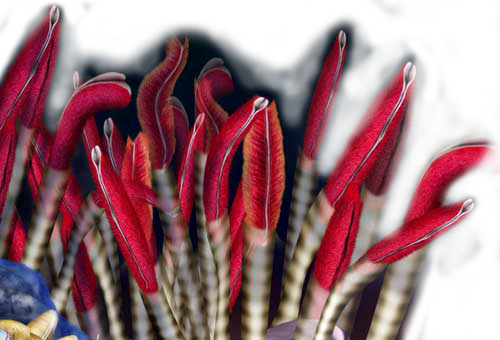giant tube worm (riftia pachyptila)
The giant tube worm was totally unknown to science until researchers exploring the deep Pacific Ocean floor discovered strange, hydrothermal vents. Powered by volcanic heat, these vents recirculate water that is rich in chemicals and minerals. The giant tube worms feed on tiny bacteria that get their energy directly from the chemicals in the water through a process known as chemosynthesis. The giant tube worms are closely related to the many smaller species of tube worms that inhabit shallower waters. These giant tube worms grow up to eight feet in length and have no mouth and no digestive tract. They depend on the bacteria that live inside them for their food. The bacteria convert the chemicals from the hydrothermal vents into organic molecules that provide food for the worm. The most noticeable characteristic of these worms is their bright red plume. This is a specialized organ used for exchanging compounds such as oxygen, carbon dioxide, and hydrogen sulphide with the seawater. The bright red color comes from the presence of large amounts of hemoglobin. It is this plume that provides nutrients to the bacteria that live inside the worm. The outer tube of the worm is made from a tough, natural substance called chitin. Although the worms have no eyes, they can sense movement and vibrations and will retreat into their protective tubes when threatened.

